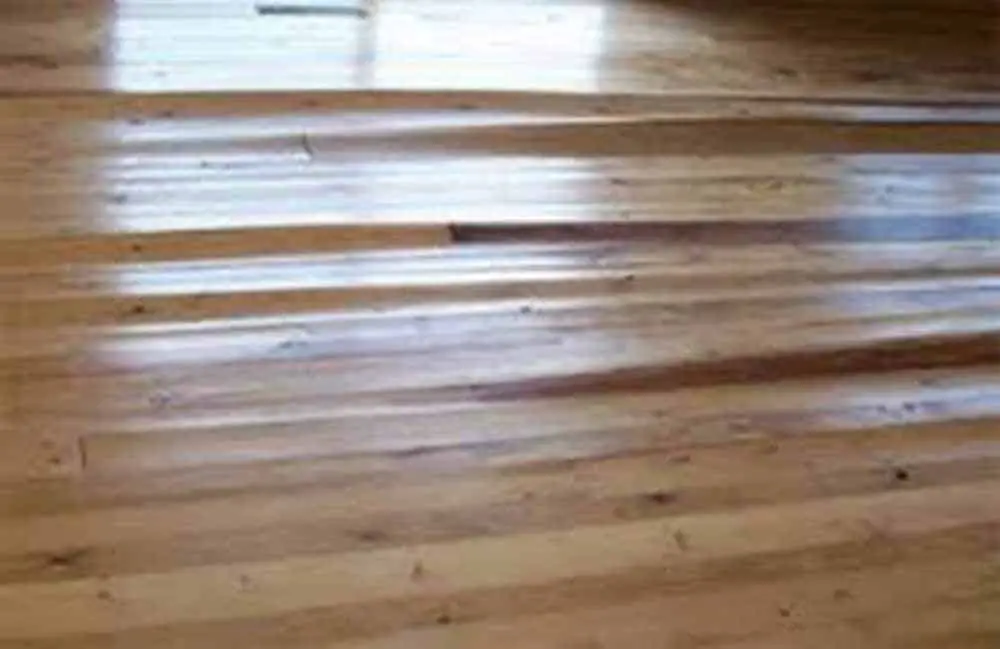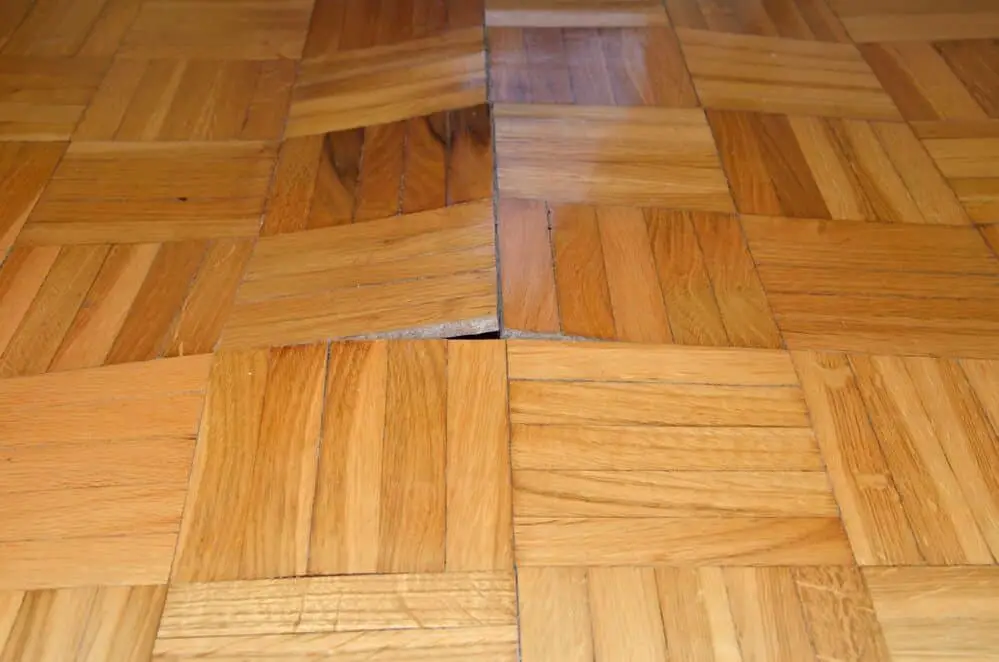The biggest enemy of wood floor is water. Wood has a porous nature that makes it easy for it to absorb moisture easily. So even a small spill that wasn’t cleaned up properly could stain your wood floor.
Even if your wood floor has been sealed and waxed, you should know how to dry water under wood floor, as too much moisture can cause your wood planks to buckle and swell.
It is essential that you dry your floor as quickly as they get wet in order to reduce the amount of damage that occurs. Although sealers and waxes are designed to make your wood floor more water-resistant, they are not 100% fool-proof.
They only make it easy to clean up any spill from the floor and also reduce the damage, but they can’t completely prevent moisture from being absorbed by your wood floor.
Fortunately, there are ways to prevent your wood floor from damage and dry out any water.
Read: How to fix damaged wood floor
How To Dry Out Hardwood Floors After A Flood
Table of Contents
Asides from a spill, your wood floor may become wet due to a major plumbing accident or flooding. So here’s how to dry out hardwood floors after a flood.
Clear Out the Area
First things first! Start by removing all floor coverings like carpet or rugs. Also, take out any furniture in the area. Allowing wet items to remain on the wood floor will prevent them from drying out properly.
If your wood flooring is covered by wet rugs, mats, or carpeting, it is important that you remove them immediately and thoroughly clean them through; you can also take them for professional cleaning.
This is to ensure that they do not begin to develop mold or mildew, which is a great health hazard. Any carpet, rug, or mat that has signs of mold growth should be discarded immediately.
Dry The Floor Surface
After clearing out the area, immediately start to dry out any visible water on the floor surface; doing so will prevent more moisture from seeping into and underneath the floors.
You can use a mop or towel to do this, but if flooding is severe, you may need to make use of a water pump, which you can rent from a hardware store. To use a water pump, set it up in the standing water and connect a hose to drainage.
Clean The Floor
Although cleaning your floor may seem unnecessary, mud and dirt may be trapped in crevices of your floor, and they can harbor bacteria and even moisture which can damage your wood.
After removing the water on the floor surface, use a non-abrasive but stiff brush, a non-sudsing but disinfecting detergent, and some water to thoroughly clean your floor. This should be done before the floor is totally dry to avoid having to re-wet your floor after it has dried.
Completely Dry The Floor
To allow the floorboards expand without buckling, and dry the subfloor quicker, take out some of the floorboards. One every 5–10 feet should do the trick.
When your wood floorboards get wet, they swell; when left in place, the boards begin to buckle and crack as they expand. Your subfloor also gets to dry faster than if all the boards are left in place. To dry out the floor, there are different methods you can implore.
Using Fans
Place a large fan in the area to help move the air around. This is one of the easiest and fastest ways to dry out your wood floor. You can use either a regular box fan or a large commercial-strength fan, which you can rent or buy at a hardware store for quicker drying.
Although central air conditioning can help to dry your wood floor faster, if your ducts were flooded and underwater, they might be full of dirt and silt, which may contain harmful bacteria which are dangerous to breathe in.
Before using your central air unit after a flood, ensure to clean out the ducts yourself or hire a duct cleaning professional.
Air Out The Room
When there’s low humidity outside your home, open up all the windows and doors to allow in drier air, which will help to quicken the drying process.
During a sunny day, you can tell if the outside air is drier just by stepping out, but you can also test the humidity level using a humidity gauge which you can purchase from a hardware store.
But only open your windows and doors during the day; they should be shut at night as the humidity outside increases.
Remove Closets And Cabinets Drawers
To increase air circulation, take out the sliding drawers of closets and cabinets in the room. This will help to dry your home faster. Increased air circulation will also help to lower the overall humidity in the home.
However, if you find out that the drawers are stuck when you try to remove them, do not try to force it as this can damage the drawers; instead, open the cabinet beneath the drawer.
Use Dehumidifiers
If a lot of water seeped into your wood floor, running a dehumidifier and window air conditioners will help to reduce the humidity in the air, especially in areas that are closed-off.
The severity of the flooding determines the suitable dehumidifier to dry your floor fast; although you can use a personal dehumidifier, you will need to rent a commercial dehumidifier for severe flooding.
When using the dehumidifier, remember to always keep nearby windows and doors shut.
Use Desiccants
Desiccants are moisture-absorbing materials that can be used to dry out moisture from closed-in areas. Place desiccants in closets or other areas where air doesn’t circulate to dry them. There are different types of desiccants like clay-based cat litter and calcium chloride pellets, and they can be purchased at any hardware or drug store.
Pump Out Your Crawl Space
If you have a crawl space that was also flooded, use pumps to take out water before ensuring proper air circulation in the crawl space to dry it out; you can use a fan for this.
Be Patient
It may take your wood floors and the subfloor weeks or even months to fully dry. You need to be patient to allow this to happen; many wood floors usually return to their original shape once they are completely dried.
Except you have interlocking wood floors, which have a higher chance of being heavily damaged by water, most types of wood floors only require surface sanding and re-nailing to get them back to their original look and beauty.
Perform A Moisture Test
If your wood floors have been drying for a while, a way to tell if they are completely dry is by performing a moisture test. This should be done before you proceed to refinish or recover the floor.
You can hire a professional to perform the moisture test on your floors, or you can buy a moisture meter and do it yourself.
You can purchase moisture meters at hardware stores, and when you carry out the test if your floor is properly dry, the moisture content should be within 5% of the readings of an unflooded section of the wood flooring.
How Long Does It Take For Water To Damage Wood Floors?
Although some of the effects of water are immediate, it may take up to 24 hours for certain signs of damage to start showing, but other effects may take days or even weeks to show.
How long it takes for water to damage wood floor and the extent to which it does depends on how long the water is allowed to stand or accumulate on the floor, but keep in mind that the effects of water accumulation on the floor may continue to linger even after the water is removed from the floor.
Read: How to clean water spill on wood floor
Conclusion
After a flood or spill, you must try to remove as much water from your wood floor as possible. Even if your floor was waxed or sealed, it cannot withstand excessive water and puts it at risk of damage if the water is left on the floor for too long.
This article tackles the different ways on how to dry water under wood floor as well as how to dry out hardwood floors after a flood.

